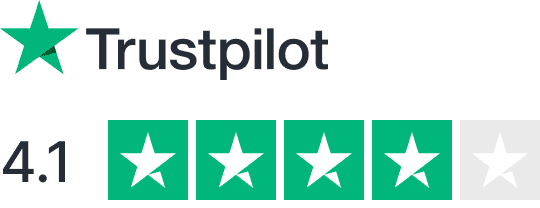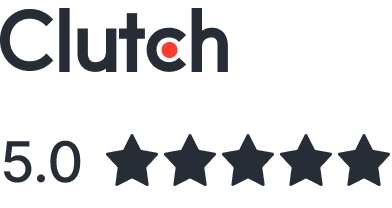Want to scale your analytics capabilities without the hassle of hiring? Analytics staff augmentation lets you bring in skilled professionals quickly and cost-effectively. Here’s why it’s gaining traction:
- Faster Deployment: Hire in days or weeks, not months.
- Cost Savings: Save up to 70% by leveraging LATAM talent.
- Flexibility: Scale teams up or down as needed.
- Expertise Access: Gain immediate skills in AI, data engineering, and cloud platforms.
- Time Zone Alignment: LATAM professionals work in sync with U.S. teams for real-time collaboration.
Quick Comparison: Staff Augmentation vs. Traditional Hiring
| Aspect |
Staff Augmentation |
Traditional Hiring |
| Time to Deploy |
Days to weeks |
3–6 months |
| Cost Structure |
Project-based pricing |
Full compensation |
| Scalability |
Highly flexible |
Limited by HR processes |
| Risk Management |
Reduced hiring risk |
Long-term commitment |
| Expertise Access |
Immediate skills |
Gradual development |
By tapping into LATAM talent, you get high-quality analytics help at a fraction of U.S. costs. For example, a data scientist in LATAM earns $48K–$54K annually, compared to $135K–$160K in the U.S. Plus, shared time zones make collaboration seamless.
Bottom line: Analytics staff augmentation is a fast, cost-effective way to boost your data capabilities while staying agile.
LATAM Analytics Talent Advantages
LATAM analytics professionals provide US companies with exceptional value, thanks to a thriving tech ecosystem, aligned business operations, and cost-effective solutions.
Cost Analysis: LATAM vs. US Markets
Hiring analytics talent from LATAM offers substantial cost advantages compared to the US. Here’s a breakdown of average savings across key roles:
LATAM vs. US Markets Salary Range
| Role |
LATAM Salary Range (USD) |
US Salary Range (USD) |
Average Savings |
| Data Scientist |
$48,000 – $54,000 |
$135,000 – $160,000 |
65% |
| Junior Data Analyst |
$26,400 – $30,000 |
$49,000 – $65,000 |
54% |
| Data Engineer |
$54,000 – $66,000 |
$120,000 – $150,000 |
56% |
These savings allow US companies to offer competitive salaries while maintaining access to top-tier analytics expertise.
LATAM professionals are skilled in a wide array of tools and technologies critical to analytics work, including:
Seamless Workflow Integration with US Teams
The benefits extend beyond costs. LATAM professionals excel in integrating with US teams, thanks to overlapping time zones (UTC-3 to UTC-5). This alignment enables real-time collaboration, reducing project timelines by 20-25% through quicker problem-solving and decision-making.
“The LatAm time zone is key for aligning with US business hours. This can improve collaboration across borders and boost operational efficiency.” – Mismo
Brazil and Mexico, two of the region’s largest talent hubs, boast over 2.2 million software engineers and welcome 350,000 new engineering graduates each year. Furthermore, half of these professionals are actively enhancing their skills in AI, outpacing many other regions globally.
With cost savings, synchronized workflows, and a commitment to technical growth, LATAM analytics talent stands out as a smart choice for US companies seeking to strengthen their teams.
Setting Up Analytics Staff Augmentation
Skills Gap Analysis
Start by analyzing your team’s current capabilities and identifying where additional expertise is needed. According to McKinsey, aligning training and resources to specific needs can cut costs by half.
- Define Current State
Take inventory of your existing analytics tools and skills. This includes evaluating your team’s proficiency with:
- Data visualization tools
- Statistical analysis software
- Machine learning frameworks
- Cloud computing platforms
- Programming languages
- Map Future Requirements
Pinpoint the skills your organization will need to achieve its business goals. Keep in mind that automation and AI are expected to disrupt 44% of essential skills.
Once you’ve mapped out your team’s needs, the next step is finding the right partner to address those gaps.
Partner Selection Guide
After completing your skills assessment, focus on selecting a partner that can seamlessly address the gaps you’ve identified.
Evaluation Criteria
| Evaluation Criteria |
Considerations |
Importance Level |
| Technical Expertise |
Familiarity with required tools/frameworks |
Critical |
| Industry Experience |
Demonstrated success in similar projects |
High |
| Security Protocols |
Robust data protection measures |
Critical |
| Communication |
Clear communication and time zone overlap |
High |
| Scalability |
Ability to grow with your needs |
Medium |
“The best outsourcing partner is one that has hands-on experience in delivering solutions according to your project scope even if it evolves during your collaboration and can deliver on time, on budget, and without disrupting your core business processes.”
– Tatsiana Kirimava, CEO and co-founder of Orangesoft
Data Security Requirements
Once you’ve chosen a partner, it’s crucial to establish strong data security measures to protect your organization’s sensitive information.
- Access Control Framework
Implement strict access protocols to safeguard data:
- Multi-factor authentication
- Role-based access controls
- Regular security audits
- Secure VPNs for remote access
- Compliance Standards
Ensure your partner adheres to relevant regulations, such as:
- GDPR for European data
- CCPA for California residents
- HIPAA for healthcare data
- Any industry-specific compliance requirements
- Data Protection Measures
Strengthen your defenses with:
- End-to-end encryption
- Regular security audits
- Incident response protocols
- Reliable data backup systems
“Ensure that your staff and the provider’s employees receive regular training on data security best practices, including recognizing phishing attacks and handling data securely.”
Managing Remote Analytics Teams
Managing remote analytics teams effectively starts with the right tools. A well-organized tech stack can make all the difference in keeping teams productive and connected. Below are some essential tools for seamless collaboration:
Tool Categories
| Tool Category |
Recommended Solution |
Key Benefits |
G2 Rating |
| Communication |
Slack |
Real-time messaging, file sharing, integrations |
4.5/5 |
| Project Management |
Jira |
Workflow tracking, sprint planning |
4.3/5 |
| Time Management |
Clockify |
Accurate time tracking, project reporting |
4.5/5 |
| Access Management |
Okta Workforce Identity Cloud |
Secure authentication, SSO capabilities |
4.5/5 |
While having the right tools is critical, pairing them with strict security measures is equally important to safeguard sensitive data in a remote environment.
Data Access Controls
Data security in remote work is not just a best practice – it’s a necessity. According to IBM, remote work-related data breaches cost an average of $4.99 million per incident. Protecting data without compromising productivity requires a strategic approach to access controls.
Here are two essential protocols:
- Zero-Trust Architecture:
This approach ensures that every user and device is verified continuously, with strict monitoring of data movement across networks. It’s about trusting no one by default and maintaining constant vigilance.
- Encryption Standards:
Secure all data transfers with end-to-end encryption using protocols like TLS/SRTP. Additionally, use TLS for client-server communications to protect against potential breaches.
The Verizon 2023 Data Breach Investigations Report reveals that 74% of breaches involve human error. This underscores the need for regular security training and clear, actionable protocols for team members.
Once security measures are in place, the next step is evaluating team performance through meaningful metrics.
Tracking the right performance metrics is essential for remote teams. Outcome-focused KPIs offer a better measure of success than traditional activity-based metrics. Stuart Kinsey, Co-founder of
SimpleKPI, explains:
“Remote work isn’t about where your team works – it’s about what they achieve. By tracking results-driven KPIs, businesses can eliminate unnecessary micromanagement and build high-performing, motivated remote teams. Measure outputs, collaboration, and engagement, not online hours.”
Here’s a breakdown of key metrics to monitor:
Key metrics to monitor
| Metric Category |
Key Performance Indicators |
Measurement Frequency |
| Project Delivery |
Project completion rate, timeline adherence |
Weekly |
| Quality Assurance |
Error rates, code review scores |
Bi-weekly |
| Team Collaboration |
Sprint velocity, cross-team contributions |
Monthly |
| Business Impact |
Revenue influence, cost savings achieved |
Quarterly |
For example, a global tech company recently adopted data-driven KPIs paired with personalized training programs. Over six months, they saw a 15% improvement in team performance. This shows how aligning KPIs with team development can drive significant results.
Remote teams also benefit from focusing on results rather than micromanaging activities. According to recent studies, remote analytics teams report 47% higher productivity compared to traditional office-based teams. This level of success is built on clear goals, robust tools, and a strong emphasis on security and outcomes.
“The term ‘information security’ means protecting information and information systems from unauthorized access, use, disclosure, disruption, modification, or destruction.” – 44 U.S. Code § 3542
Analytics Staff Augmentation: 2024 and Beyond
AI in Team Management
By 2024, a striking 71% of organizations had integrated AI into their talent acquisition processes, with 92% of Fortune 500 companies leveraging generative AI for recruitment. Tools like predictive analytics are transforming workforce planning by forecasting staffing needs with up to 85% accuracy. A prime example is Neobank
Northmill, which used
ThoughtSpot‘s AI to pinpoint onboarding drop-off points, leading to a 30% boost in conversion rates.
“It’s the people who understand how to collaborate with AI that will have a real advantage over the next few years. When employees fully grasp this, they will be in a strong position to both improve how they do their job today and advance their career moving forward.”
– Dave Birss, LinkedIn Learning instructor
This shift toward AI-enhanced management is redefining how organizations evaluate skills and adapt to changing market demands in the analytics field.
Skills in High Demand
The demand for analytics expertise is skyrocketing. The US Bureau of Labor Statistics predicts a 23% growth in data analyst roles by 2032, with average salaries climbing to $111,000 in 2024. Meanwhile, the rapid expansion of the cloud computing market – expected to grow from $570 billion in 2022 to around $2.5 trillion by 2030 – is driving the need for professionals skilled in cloud-based analytics.
“Everything starts with the data.”
– Nadine Kawkabani, Global Business Strategy Director at MFS Investment Management
Here’s a snapshot of the skills organizations are prioritizing:
Snapshot of the skills organizations
| Skill Category |
Required Expertise |
Industry Application |
| Technical Core |
SQL, Python/R, Data Visualization |
Database management, Statistical analysis |
| Cloud Computing |
AWS, Azure, Google Cloud |
Infrastructure scaling, Data storage |
| AI/ML |
Machine Learning algorithms, NLP |
Predictive modeling, Automation |
| Business |
Communication, Problem-solving |
Stakeholder management, Strategy |
These capabilities highlight the blend of technical and strategic expertise that businesses are seeking to stay competitive.
Global Compliance Updates
As technology reshapes workforce demands, organizations must also navigate evolving compliance standards. For instance, the EU AI Act emphasizes transparency in AI-driven hiring practices, reflecting the growing importance of ethical and regulatory considerations.
Key compliance priorities include:
- Ensuring transparency in automated decision-making
- Strengthening data protection for remote teams
- Adhering to cross-border data transfer regulations
- Monitoring AI ethics and mitigating bias
“People skills are going to come more to the center of individual career growth, and people-to-people collaboration is going to come into the center more for company growth. For leaders, you’ve got to start with communicating clearly, compassionately, and empathetically with your teams.”
– Aneesh Raman, LinkedIn VP
Striking a balance between innovation and compliance is no longer optional. With 75% of knowledge workers now using generative AI and reporting substantial time savings and creativity boosts, organizations must ensure their analytics teams operate efficiently while adhering to regulatory frameworks. Success in 2024 and beyond will hinge on this delicate balance.
Conclusion
Analytics staff augmentation has become a smart way for U.S. companies to cut costs without compromising quality. By tapping into nearshore talent, businesses can save up to 70% on labor expenses while maintaining excellent performance standards. For instance, while U.S. data analysts typically earn between $49K and $106K annually, professionals in Latin America offer comparable expertise for $30K to $60K. The financial advantage is clear.
The results speak for themselves. A fintech company managed to save $1 million annually by hiring 15 nearshore engineers in Latin America in just six weeks, all while meeting SOC 2 and ISO 27001 compliance standards. Similarly, an AI startup slashed its product launch timeline by six months by strategically hiring talent in Brazil and Colombia, reducing costs by 55%.
“LATAM offers a strategic advantage: a deep, diverse, and skilled tech talent pool that aligns with today’s business needs – speed, flexibility, and quality.” – NOUS LATAM
But the benefits go beyond cost savings. Latin American professionals also enhance operational efficiency, thanks to their 80-100% time zone overlap with U.S. teams. This real-time collaboration fosters better communication and stronger team dynamics. In fact, 68% of companies report faster onboarding and improved cohesion with LATAM teams compared to those based in Asia or Eastern Europe. Plus, maintaining strict security and compliance measures ensures these partnerships remain reliable and secure.
Looking ahead, the future of analytics staff augmentation lies in fully embracing the advantages LATAM offers while prioritizing robust security frameworks. With the region’s data analytics market expected to grow to $26 million by 2030, companies that establish strong partnerships now will be ready to scale their analytics capabilities efficiently and sustainably.
Related posts
















